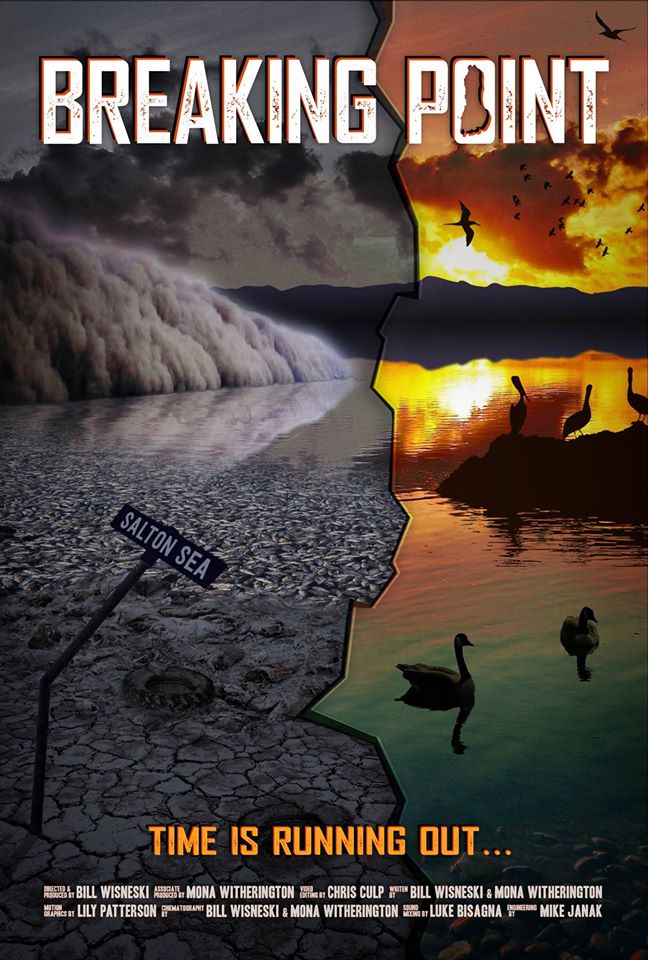The stench of dead tilapia and rotting algae filled the dry desert air. It’s effect was twofold. The first of course, was revulsion. The second was to ask the question: What happened?
Produced, directed and written largely by PCTV’s Bill Wisneski, “Breaking Point” is a feature-length documentary that takes a look at California’s geologically fascinating Salton Sea, and the tremendous environmental disaster concerning it.
The specifics of the problem are quite frightening indeed. The main issue is that, for a number of reasons, the sea is drying up. This is not only a problem in and of itself.
Of course there will be devastating effects that the disappearance of the sea will have on its indigenous wildlife, migratory bird populations and local residents. Beyond that, there are a number of secondary emergencies that will result from the disappearance of the sea. Among which are extremely unhealthy levels of toxic chemicals polluting neighboring communities, and serious changes to the way water is distributed here in Southern California.
The film explores several possible avenues that may be taken in an attempt to preserve some of what is left of the Salton Sea. Rather than using its platform to filibuster for a particular solution to the problem however, “Breaking Point” instead opts to educate the viewer about the history and status of the sea. It then sheds some light on a number of the different options that are being discussed.
“This could be, literally, the worst environmental disaster in U.S. history,” Wisneski said in reference to the looming catastrophe. When speaking of the potential for success from the various plans on the table regarding the preservation of the sea, Wisneski said “It could also be one of the most incredible success stories that have ever occurred.”
If the primary focus of “Breaking Point” is to educate, distribution would certainly help the film in reaching as many people as possible. The film has been entered in at least two prestigious film festivals in hopes of not just garnering accolades, but attention, as well as a distribution deal could increase the film’s audience by a significant margin.
In addition, there are plans to submit it to many other festivals, particularly in the American Southwest. “Breaking Point” will premier on Feb. 26 at the Sedona Film Festi- val in Arizona. In addition, it has just been accepted to the American Documentary Film Festival, which runs from March 26 – 30 in Palm Springs.
Ironically, Palm Springs is one of the largest and wealthiest areas in the projected danger zone that would suffer major consequences of the loss of the Salton Sea.
But what about those of us closer to home, who have no plans to jour- ney to these various film festivals? The good news is that there are plans to air the documentary on PCTV. The film will screen at 8 p.m., 10 a.m., and 9 p.m. on Feb. 21, 22, and 27 respectively. PCTV can be found on Time Warner channels 16 & 14, AT&T on channel 99, and Cox Communications, channels 16 and 19.
Image Sources
- 10869909_874966539191757_2180087232027454663_o: Image courtesy of PCTV. | Used With Permission

